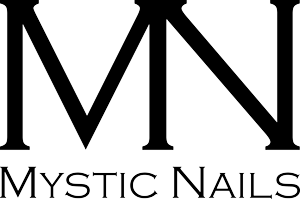Why does the gel turn yellow and why does it glow blue in the lamp?
I think you've asked yourself at least once why some gels glow bluish under the lamp when cured and others don't. What could be the reason?
In this short video I'll tell you and you'll understand:
There is an answer in the nail community that this is because these products, these gels, have a kind of UV filtering additive in them, which is added to prevent the colour used on the nail from fading or yellowing due to exposure to strong UV light (sunlight). This answer may seem logical, but it is still wrong.
This is not the reason why bluish light is detectable, if only because the gels do not contain any UV filter additives. However, it is true that the bluish light is visible during curing in certain gels because those products contain an additional additive, which is an optical brightener.
What is an optical illuminator, why do we use it and how does it work?
The purpose of optical brighteners is to prevent the yellowing of gels, which are typically clear. Yellowing is most noticeable in clear gels, such as clear base gels, clear builders, clear top gels, i.e. light gels. Yellowing may be noticeable immediately after setting, but often only a few days or even 1-2 weeks later.
The yellowing is caused by the presence of a photo-curing agent in the product. We already know from another video and blog post that a gel-based product (e.g. building gel, gloss gel, gel polish) basically has three main ingredients:
1) resin
2) solvent
3) photo-binding material
The latter component accounts for only about 1% of the final product, yet unfortunately this component has the potential to yellow the product due to its specific properties. One such photo-binding agent is TPO (which is banned in nail products from 1 September 2025 as it can damage fertility).
The question is: what can we do to eliminate or reduce this yellowing?
Basically, there are two options for manufacturers:
1) Use less photo-biding agents in the manufacture of the product, thus reducing the yellowing. In this case, however, the curing time will be longer, which is not an advantageous product feature, given the clear market expectation for the fastest possible curing time.
2) The other option is to mask (not eliminate) the yellowing with the optical brightener additive mentioned earlier. And once this additive is incorporated into the gel, the visible evidence of this is that it will glow bluish under UV light. That's how you know it has optical brightener in it.
As I mentioned above, the yellowing is not eliminated by the optical illuminator, it is only optically masked and will not be visible to the naked eye, at least until the time the client returns to the salon to update their set.
Optical brightener is not only known to nail manufacturers, it is also often found in plain white A4 sheets or white T-shirts, for example, but is also used as an additive in fabric softeners to keep white clothes white after many uses and washes. As you can see in this video, where I summarize the information in rhyme:
So to sum up...
...those gels (typically clear gels) that glow blue when cured in a UV/LED lamp contain an optical illuminating additive designed to mask the yellowing caused by the photo-binding agent (e.g. TPO), making it invisible, at least until the customer comes back to renew their nail set at your salon.
Unfortunately, almost all photo fixatives yellow, some more, some less. TPO, for example, is the preferred choice of manufacturers because it has a short curing time and very low yellowing in the final product. However, from 1 September 2025, TPO will be banned from use in artificial nail gels, so developments are underway to explore alternatives. Of course, Mystic Nails already has many products that are TPO-free and we have a special TPO-free label on the webshop for these products, as you can see for example with our popular and one of our most successful polishes, Thick-Top Gel.
Use only safe nail materials!
Finally, I would like to point out that besides TPO, there are many ingredients and additives that have been banned in the EU for years due to their suspected or proven hazardous and harmful nature, so if you want to use a safe nail base, only use products that are registered with the EU's official cosmetic reporting portal, the CPNP system.
What is the CPNP system? You can find detailed information about it here.
Remember, the client is relying on you, you are the professional and if you use unsafe products on them, the responsibility is yours. It's not blame, it's a fact and as a professional you have to take that responsibility!
The difficulty is that unfortunately you cannot check whether the product is registered in the CPNP system, as this database is not public. We don't know the reason why not, as it would be in everyone's interest. However, we have access to the database - as it is mandatory to register our products in the CPNP - so we have access to the other products that have been registered, so we can check the fact of registration and we are happy to help anyone. You can find more information on how to do this here.
Warm wishes,
Laci Gyimesi
Mystic Nails CEO





